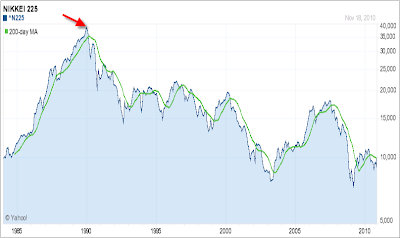
Lately, I have received several emails from readers being concerned about the state of the economy, domestically and globally, and the effect of policies clearly designed to lower the value of the dollar.
Larry’s comment/question is very typical:
I’ve been doing OK using your strategy, but I’m getting pretty scared with all the dollar devaluation talk I’ve been seeing.
What do you suggest we do to preserve our assets? Maybe it’s timely for you to devote a column to the subject–thanks so much for your comments.
It seems that the entire world is scrambling to deal with the Fed’s latest quantitative easing program, which originally was intended to lower rates and boost the ailing economy. Well, interest rates have moved higher, and our trading partners around the world see this as nothing more but an attempt to drive the dollar lower in order to support our exports.
Be that as it may, my view has always been that I try not to concern myself too much with things that are out of my control. While I acknowledge these issues and at times write about them, I do not let them affect me personally.
Yes, the dollar may be sliding lower until some serious European debt default pulls the rug out from under the Euro and pushes the dollar higher again. For a change, the Euro may then become the whipping boy of choice for a while until some other worldwide event has the pendulum swinging back the other way.
My preference is to keep my focus on those things that I can control. That is primarily my choice of investments and how to deal with them. While a lower dollar will increase prices for imported goods, that’s just a fact you have to live with. If you travel to Europe, you will feel the lack of dollar purchasing power the first time you pay over $7 for a gallon of gasoline, as I just experienced a few weeks ago.
However, domestically, a lower dollar has not yet had the same effect as for the international traveler. Nevertheless, investors are concerned about preserving and growing the value of their investable assets.
Most investors did not accomplish that during the past decade as two bear markets combined forces to turn that last 10-year span into a losing proposition for the S&P; 500. While the dollar headed south as well during that period, you can hardly blame it for causing stock market losses.
Rather than focusing on dollar devaluation, you are better served to reevaluate how you invest your money. My belief is that investors have lost far more during the past decade due to bear markets destroying portfolios than loss in purchasing power due to a weakening dollar.
If that applies to you, you need to change your investment approach and, if you have been a reader of this blog for a while, you know exactly where I am going with this.
Since we are living in an era of boom and bust, it is obvious to me that severe downside market slides are here to stay and will surprise the investing public every so often.
We have seen firsthand what has happened to Japan after their real estate bubble burst some 20 years ago (see arrow in above chart).
The financial markets rallied sharply after several severe setbacks leaving those hanging on to their investments for dear life with sharp losses in the end, while those following the trends managed to come out ahead. Just look at the above 20-year chart of the Nikkei 225 and tell me how well buying and holding the index would have worked.
That continues to be my theme. Preserve and grow your assets whenever the markets are favorable, but step aside when the brunt of a bear market is about to strike with full force.
While that will not help you with a sliding dollar, it will assist you in staying ahead of the game by avoiding a double whammy: Losing purchasing power due to dollar devaluation and seeing your assets getting pummeled when the markets plunge.
